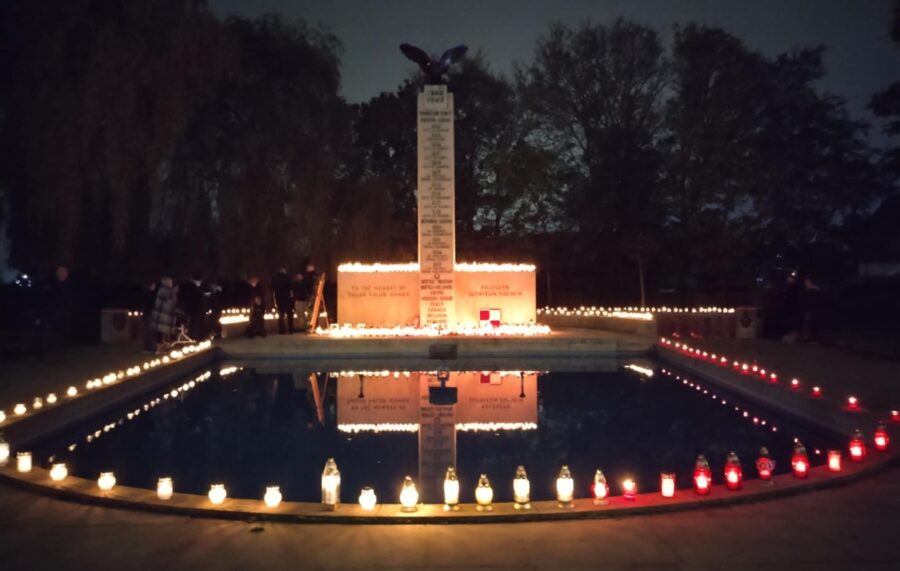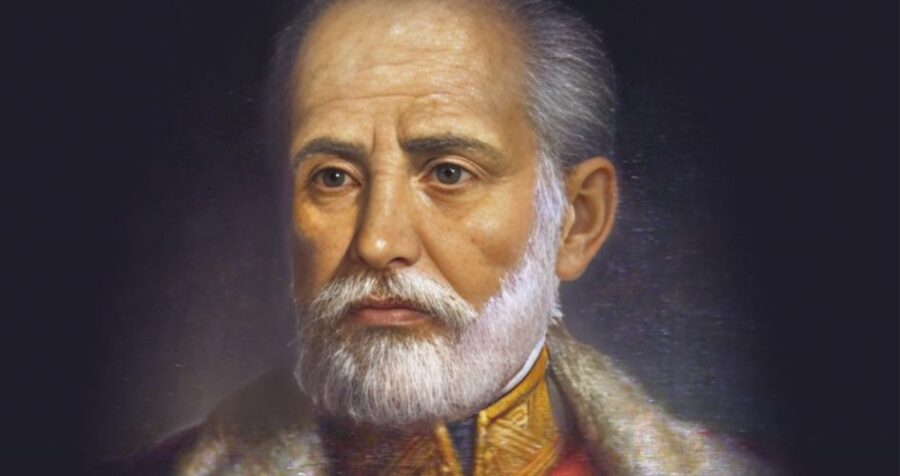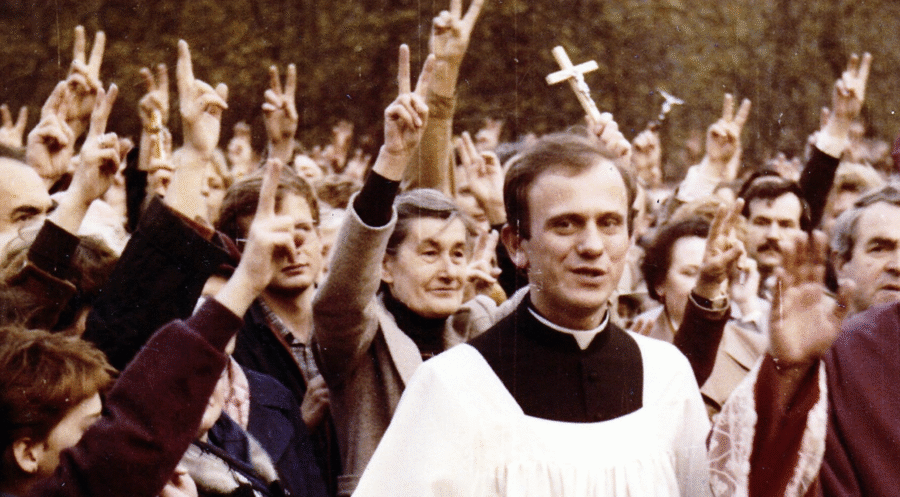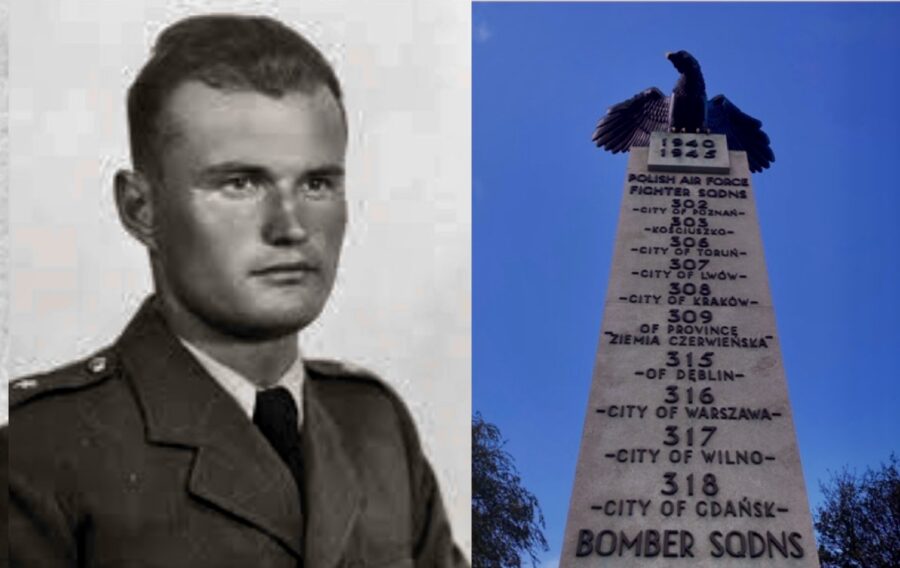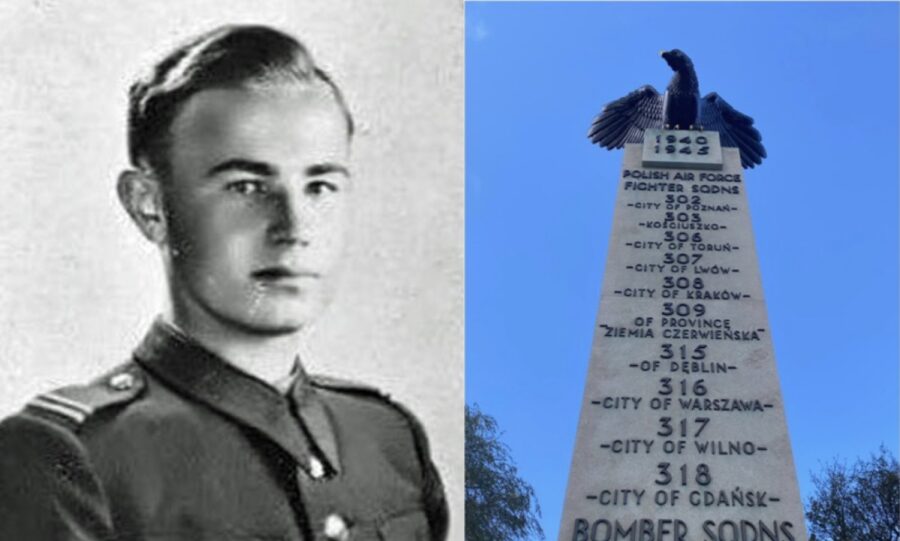Warsaw lives the memory of the Warsaw Uprising long before 1 August. This is best seen by visiting the memorials dedicated to the martyrdom of Polish heroes. There are, unfortunately, an infinite number of these places in Warsaw. Far too many. Candles are lit at every monument and memorial site, passers-by lay flowers and scouts stand guard. City buses, trams and taxis drive around with small Polish flags flying in the wind, also many private drivers choose to show their patriotism in the same way. The Polish TV broadcasts films such as „Kanał„, „Kolumbowie„, „Powstanie Warszawskie” and „Miasto 44„. Young people proudly parade in T-shirts with the Anchor – a symbol of the Home Army and the Uprising. Polish flags are everywhere. One often sees and hears foreigners coming to the Polish capital to learn more about our painful history.
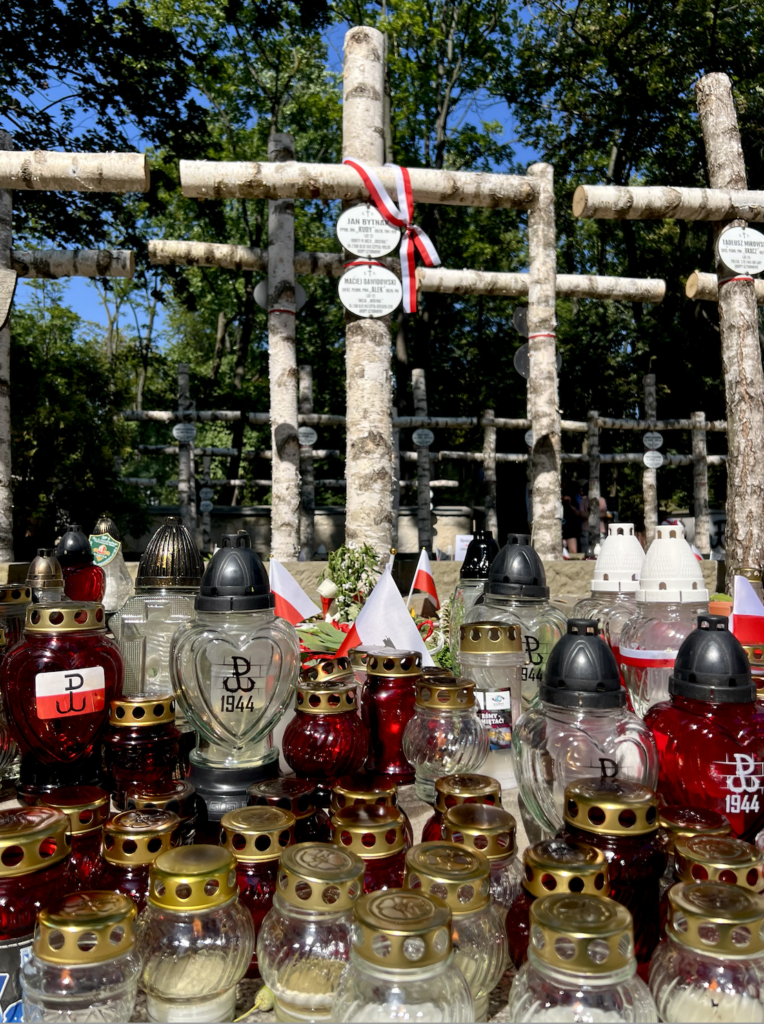
This year’s anniversary was a special one, as it marks 80 years since the outbreak of the Uprising. The 1944 Warsaw Uprising was the largest armed action of the Polish underground State in German-occupied Europe. Planned for only a few days, it lasted more than two months. Its military objective was to liberate the capital from the extremely brutal German occupation, which had lasted since September 1939. Although the results of this battle were tragic, Poles paid tribute to the people who did not give up and were true to their principles to the end. They fought so that we could be free today. It is on 1 August that the whole of Warsaw shows this respect in an extremely moving way.
As we do every year, we have chosen several places where ceremonies are held with the great commitment of the inhabitants, who pay tribute with emotion and respect to those who fought for freedom.
Warsaw Uprising Monument
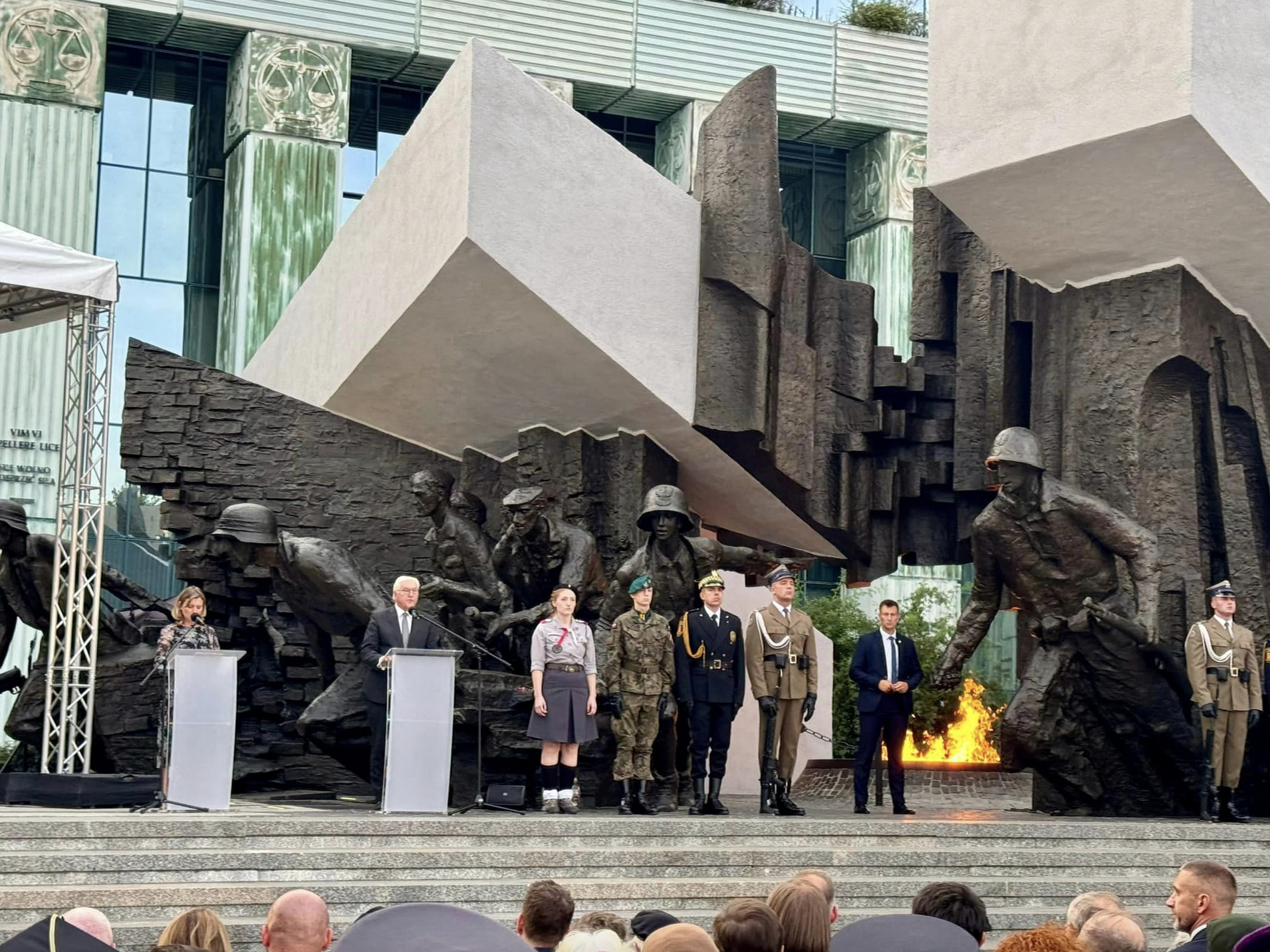
On the eve of the anniversary, on 31 July, we took part in a solemn Holy Mass, anniversary speeches by the Presidents of Poland and Germany and a solemn ceremony, all of which took place at the Monument to Warsaw Insurgents. The monument was designed by Professor Wincenty Kućma and is located on the eastern side of Krasiński Square in Warsaw. The monument was unveiled on 1 August 1989.
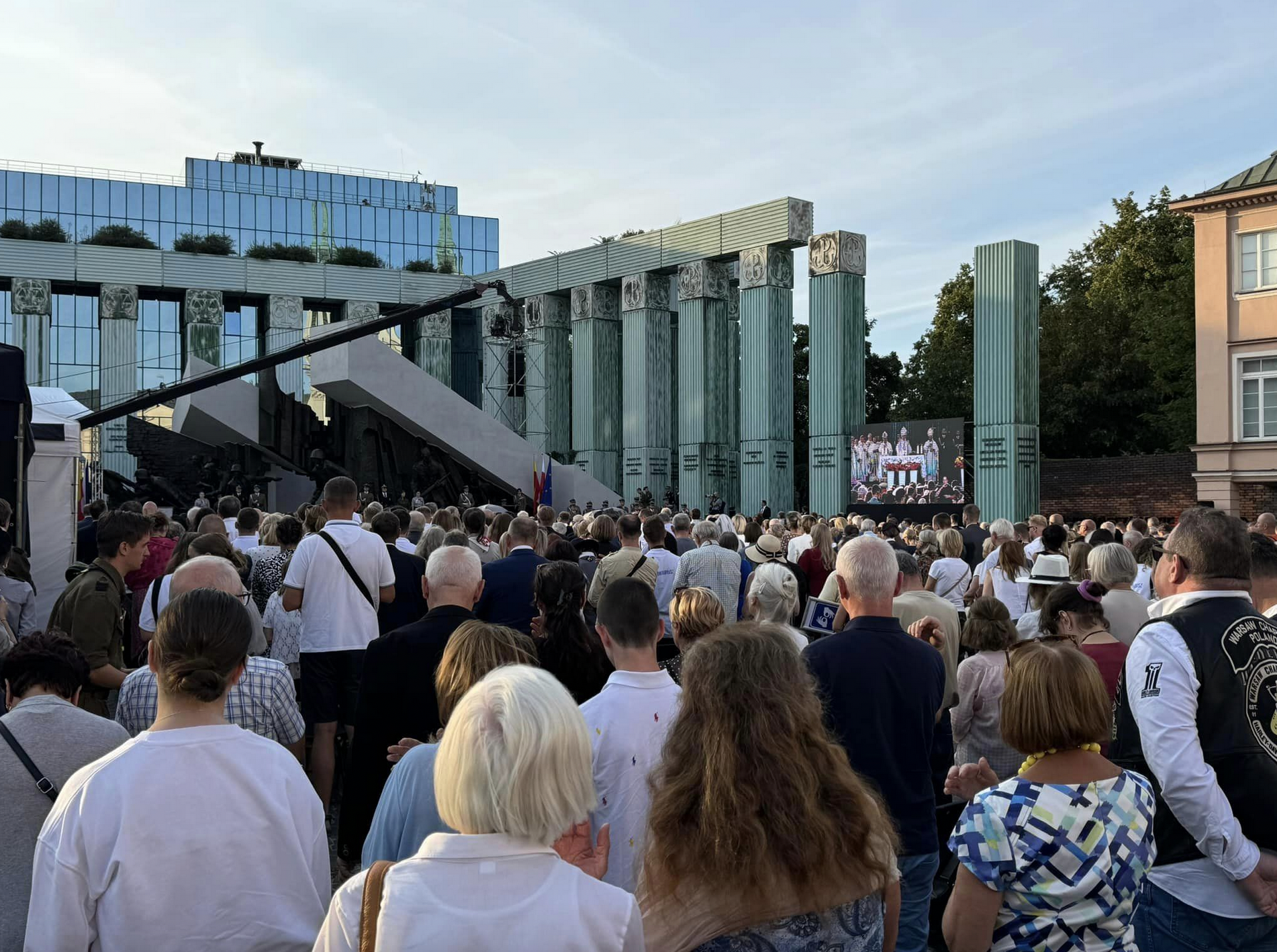
Particularly noteworthy are the words of President Frank-Walter Steinmeier „I ask your forgiveness at this moment and in this place (…) We Germans, on whose behalf I am speaking today, cannot forget the Warsaw Uprising. We cannot and will not forget the suffering we brought upon Poland.” The speech was interrupted several times by shouts from the audience of „Reparations!„.
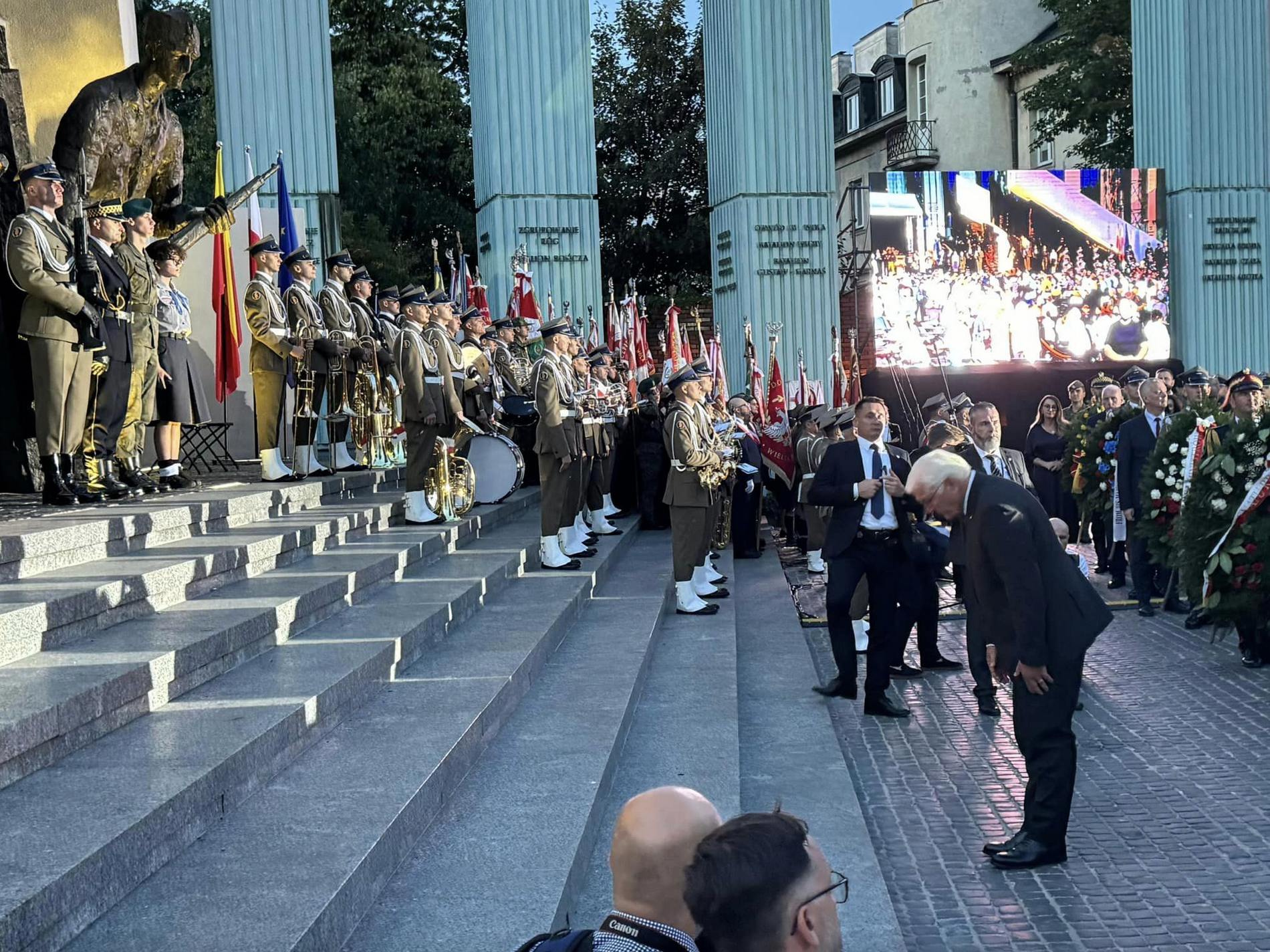
Throughout the day, Warsaw residents lay flowers and candles at the monument, and in the evening there is a special concert, the culmination of the Warsaw Uprising March (about which we will write next).
Warsaw Uprising Park/Cemetery
The Cemetery is located in Warsaw’s Wola district, on Sowińskiego Street. It is the largest war cemetery in Poland (one of the largest in Europe), opened on 25 November 1945 for the burials of those initially exhumed to mass graves from the streets and squares of the city during the Rising. The first burials at the Warsaw Insurgents’ Cemetery took place as early as November 1945 and lasted until the early 1950s. The largest burial took place on 6 August 1946. As much as 5.5 tonnes of human ashes (117 coffins) of the murdered and burnt Insurgents were brought in. According to the cemetery books, 104,105 people are buried in the Warsaw Insurgents Cemetery.
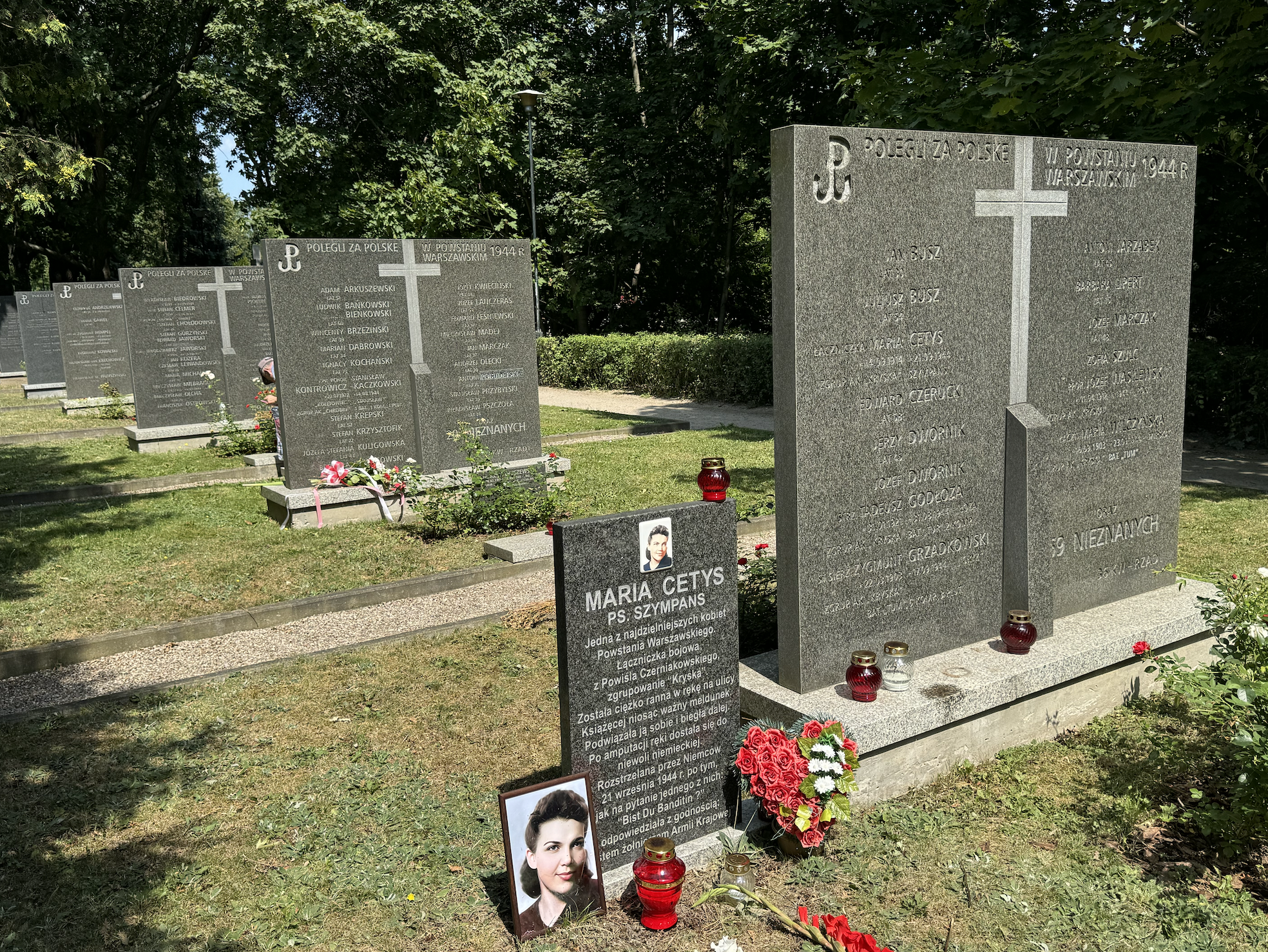
The „Fallen Unconquered” Monument
Another place visited by many Varsovians is the 'Polegli Niepokonani’ (Fallen Unconquered) monument, unveiled in 1973. The monument was designed by the sculptor Gustaw Zemla. It depicts a warrior lying with a shield. It is the first monumental monument to the Warsaw Uprising. Its integral part is a huge barrow, hiding 12 tons of human ashes (remains of about 50 thousand people).

Writing at the barrow site says:
„Here lie the ashes of more than 50,000 Poles, civilian inhabitants of Warsaw and soldiers of the Home Army, fallen for the freedom of their Homeland murdered by the Germans during the Warsaw Uprising in August and September 1944.
On 6 August 1946, 117 coffins containing the ashes of those murdered and burned were deposited here. They were transported, among others, from the Gestapo headquarters in Szucha Avenue, Wolska Street, Górczewska Street, Sowińskiego Park, St. Stanisław Hospital (Franaszek’s factory), Moczydło Street, Młynarska Street„.

Monument of the Little Insurrectionist
Sometimes a picture is worth more than a thousand words. Little Insurgent Antek was killed by the Germans at the age of 13. It commemorates the youngest participants of the Warsaw Uprising. This unusual monument was designed by Jerzy Jarnuszkiewicz in 1946. The artist donated his design to the scouts free of charge. A community collection was set up to complete it. On 1 October 1983, the monument was unveiled at Podwale Street, by the outer defence wall of the Old Town in Warsaw.
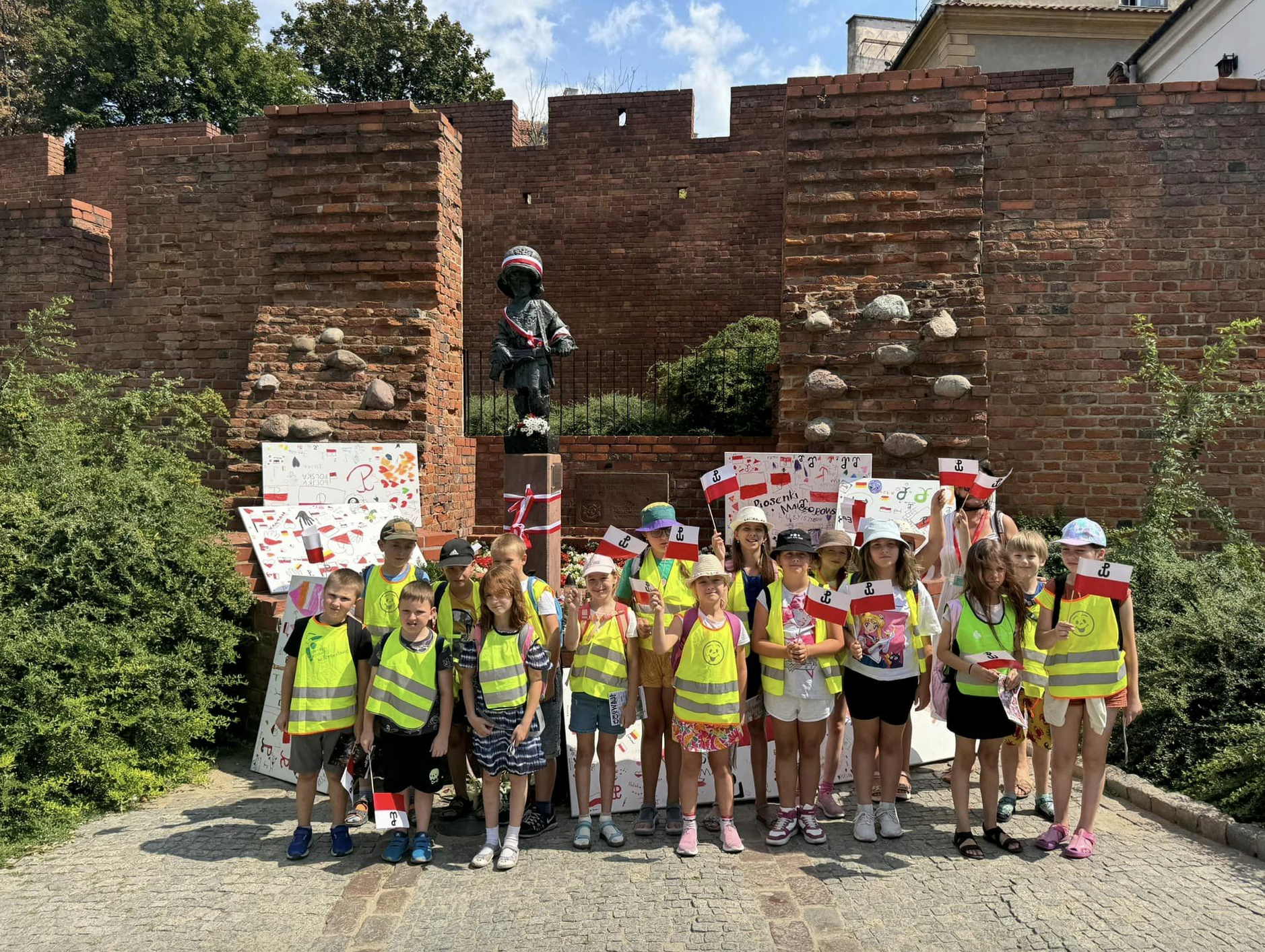
Early in the morning, Warsaw’s residents came to the memorial to light candles for the youngest heroes.
The PASTa Building
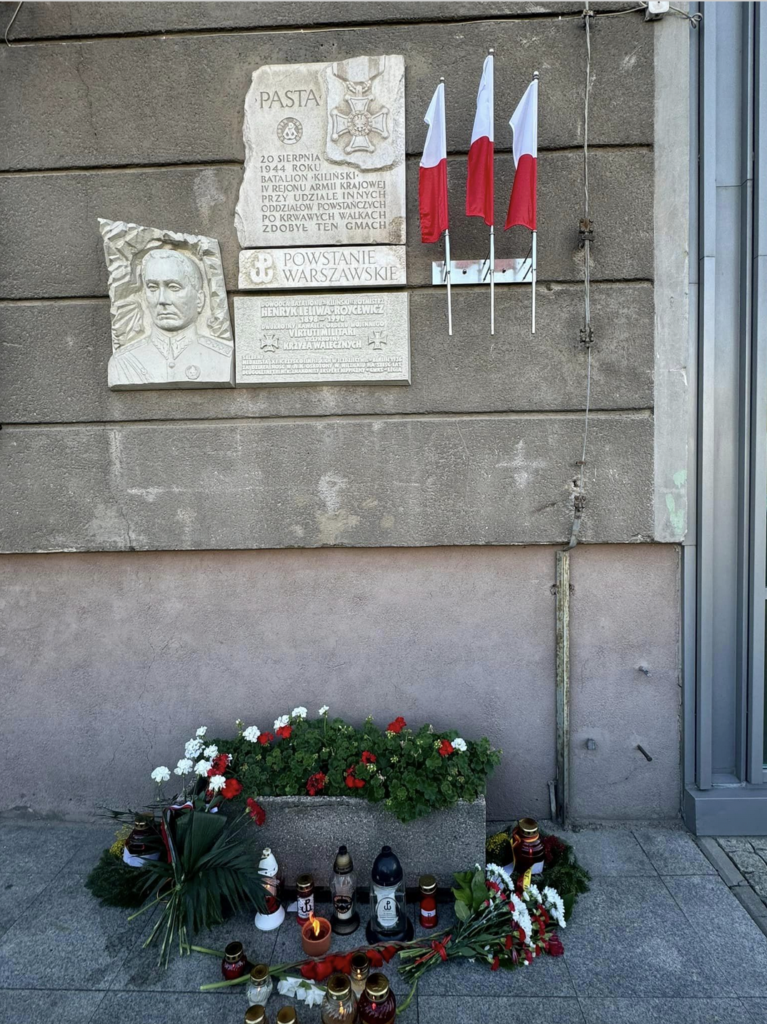
Entrances to the city sewers
Throughout the city, the locations of the entrances to the sewers used by the insurgents were marked. Lieutenant Marzenna Schejbal, who for many years held the position of pre-chair of the London branch of the Home Army, passed away 2 years ago. During the outbreak of the Warsaw Uprising, she served in the „Łukasiński” battalion, where she was a liaison officer and a nurse. When Warsaw was falling, Marzenna escaped from the city through one of these sewer lines. You can read more on our website about the meeting commemorating Lt. Marzenna Schejbal, President of the London AK Circle.
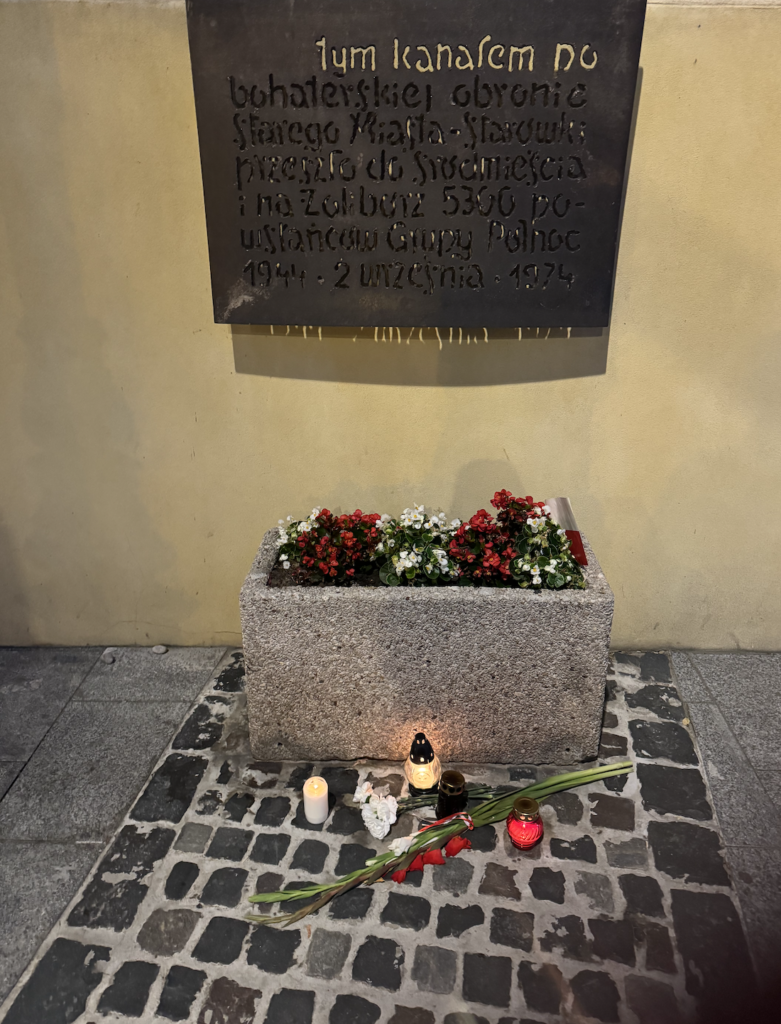
Powązki Military Cemetery and the Gloria Victis Memorial
The monument was erected in 1946 to honour Home Army soldiers killed during the Warsaw Uprising and the German occupation. Surrounding the monument are the graves of soldiers from all Home Army units fighting in the Uprising exhumed from different parts of the city in 1945-1947.
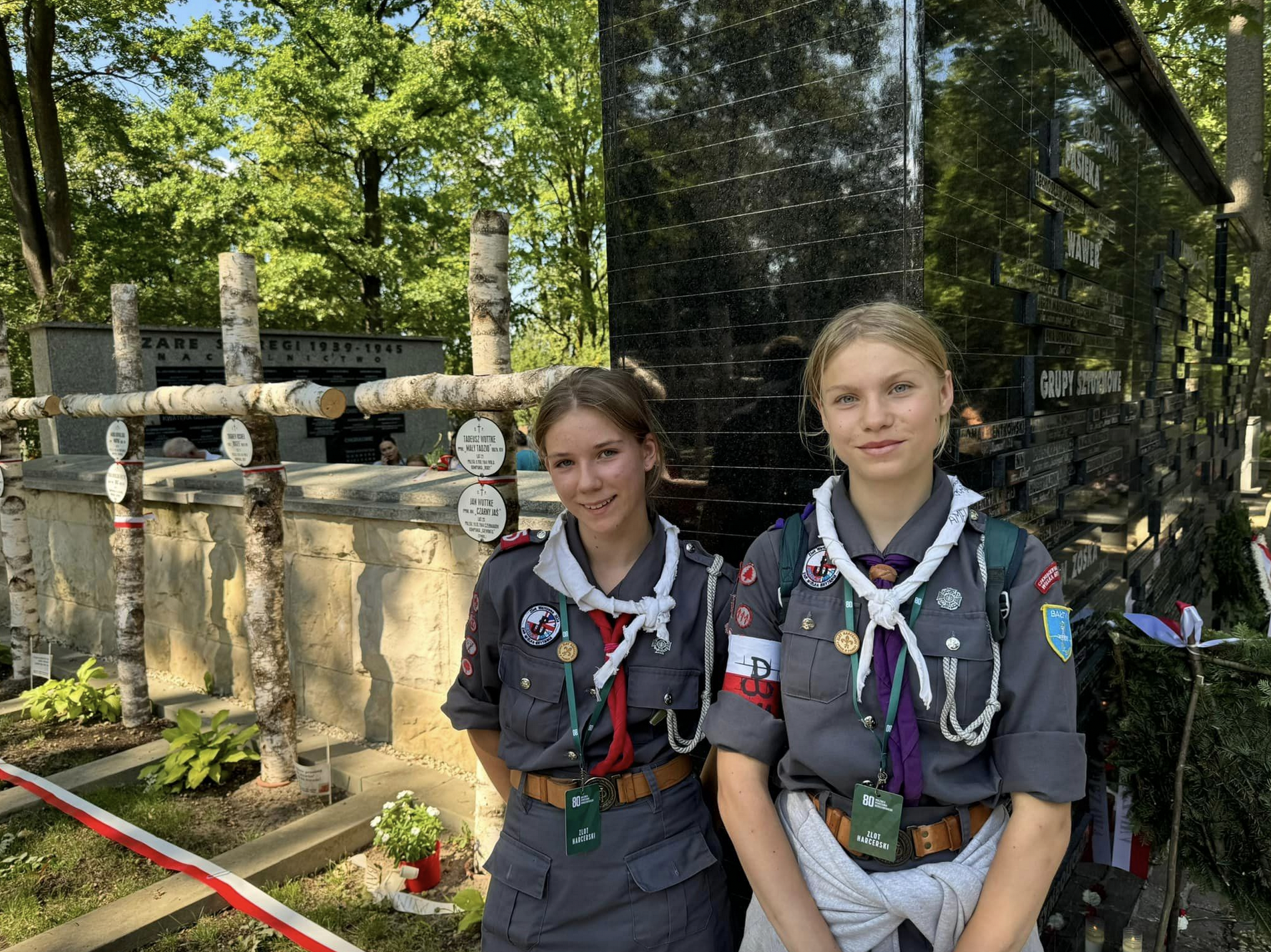
The front face of the monument bears the insignia of the Virtuti Militari Cross and the Latin maxim Gloria Victis (Glory to the Vanquished). Anniversary ceremonies are traditionally held at this monument with the participation of representatives of the authorities, veterans, their families and the citizens of Warsaw.
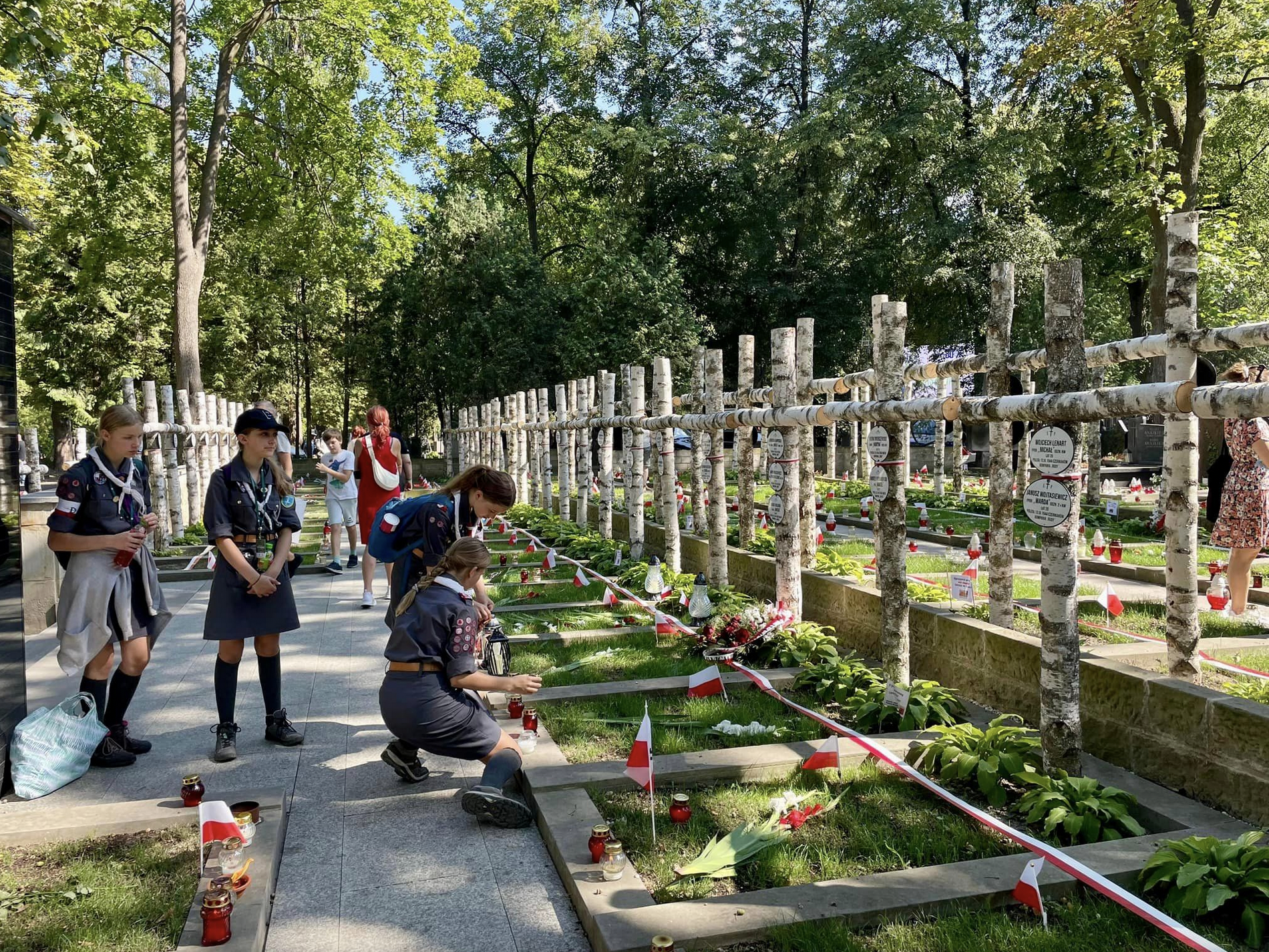
Dmowski Roundabout – The „W” Hour
This is the place we chose, among dozens of others, to honour the „W” hour (the code name for the „Storm” action that started the uprising). At 5 p.m., to commemorate the outbreak of the Uprising, the whole of Warsaw stops for a minute to pay tribute to the insurgents. Passers-by stand, cars stop and public transport freezes.
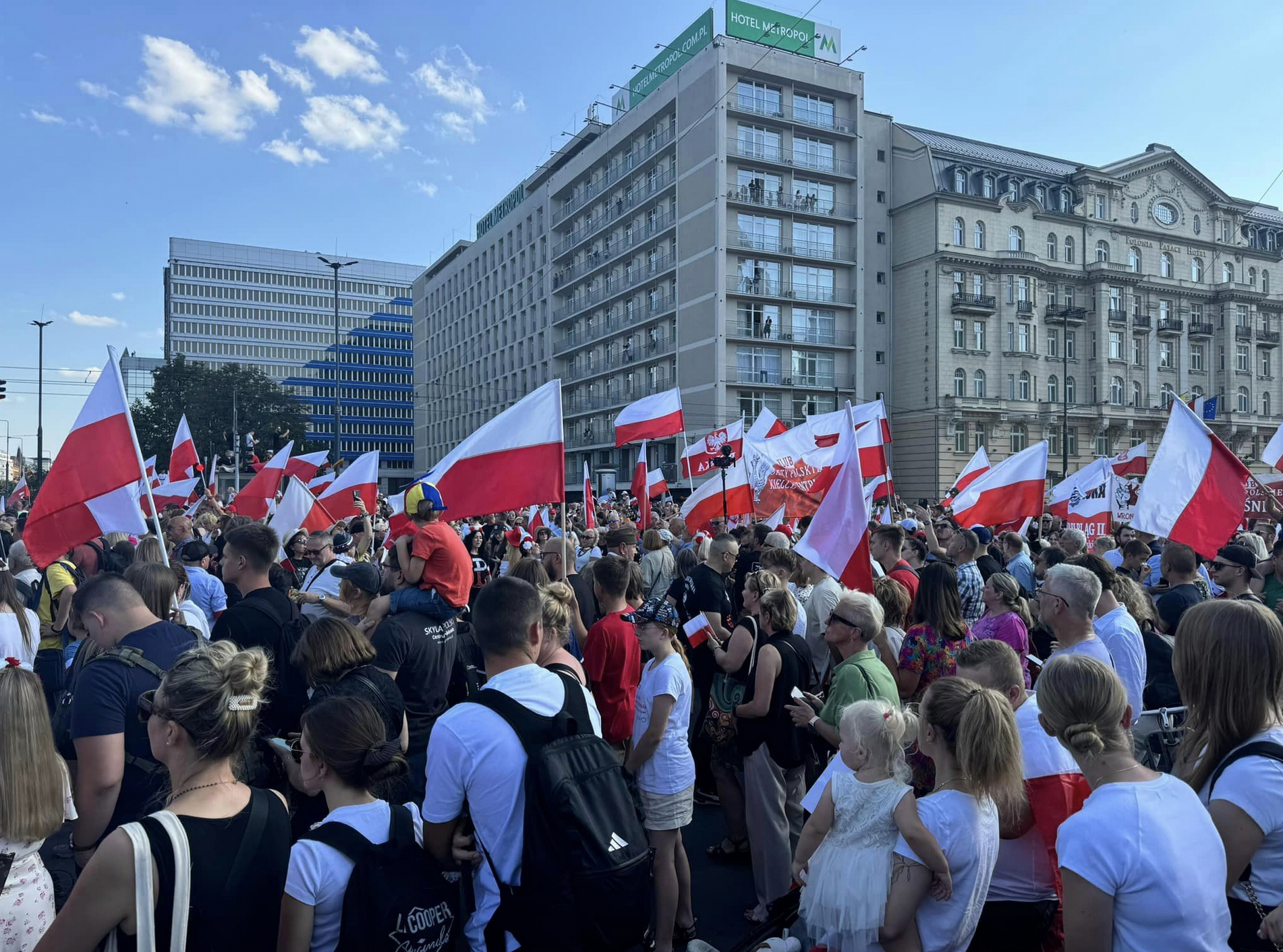
For 1 minute, the poignant howling of the city’s sirens could be heard throughout the city. The commemoration of the uprising at the Dmowski Roundabout was traditionally attended by Warsaw residents, soldiers and veterans, members of patriotic societies and motorcyclists. This year, the celebrations were additionally honoured by the flight of a Hercules aircraft and 4 F-16s.
Warsaw Uprising March
After the 'W’ Hour, the annual March took place, which walked along Aleje Jerozolimskie and Nowy Świat streets, through Castle Square and Miodowa Street to the Monument to Warsaw Insurgents in Krasiński Square.
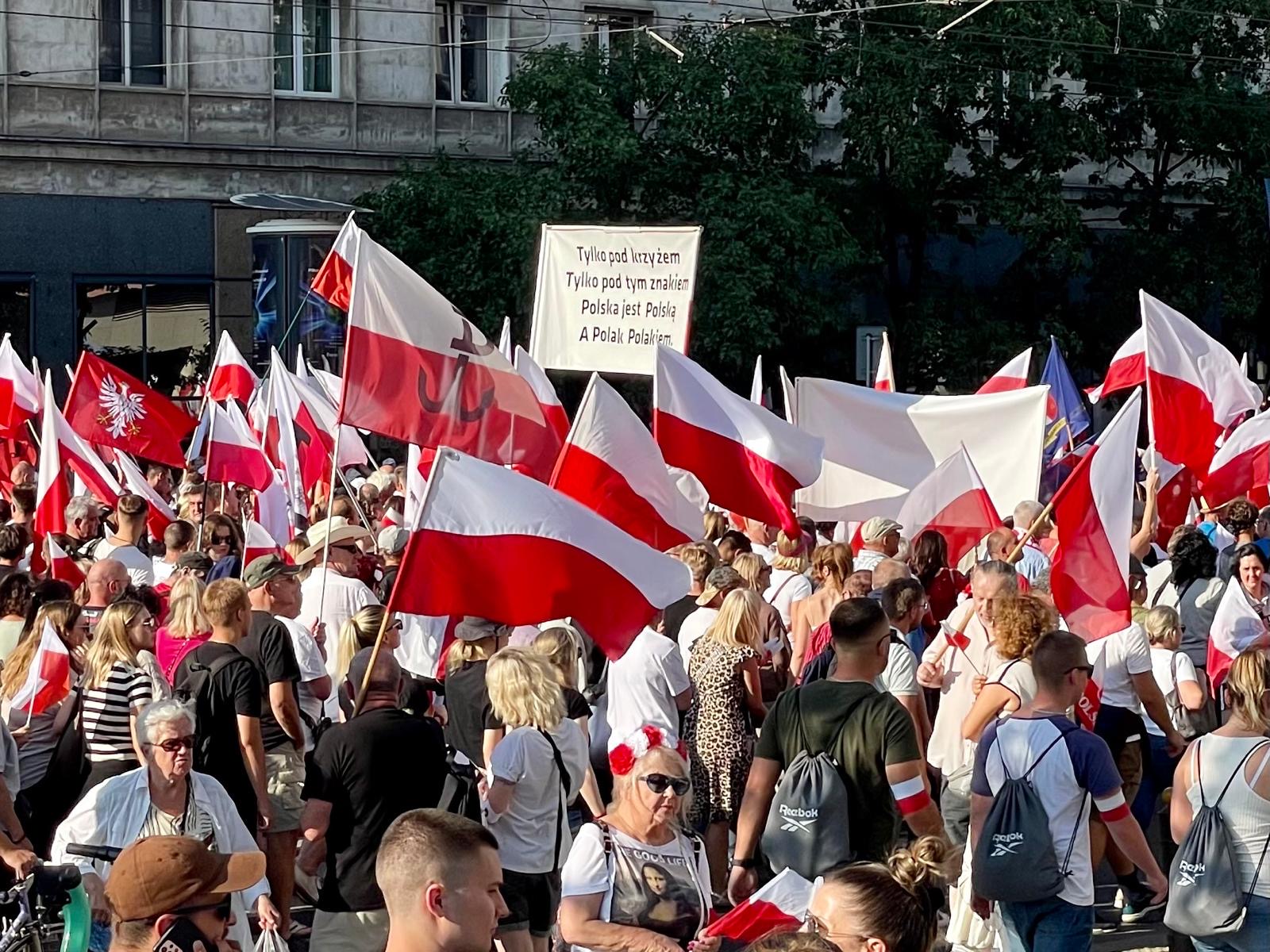
Thousands of Warsaw residents participated. The march ended with a patriotic concert that lasted until the late hours.
Singing the (un)forbidden songs
It was the final, evening part of the celebrations, one of the most favoured by Varsovians and guests from around the world. The crowd in Piłsudski Square had already gathered hours before the concert to find the best possible seats.
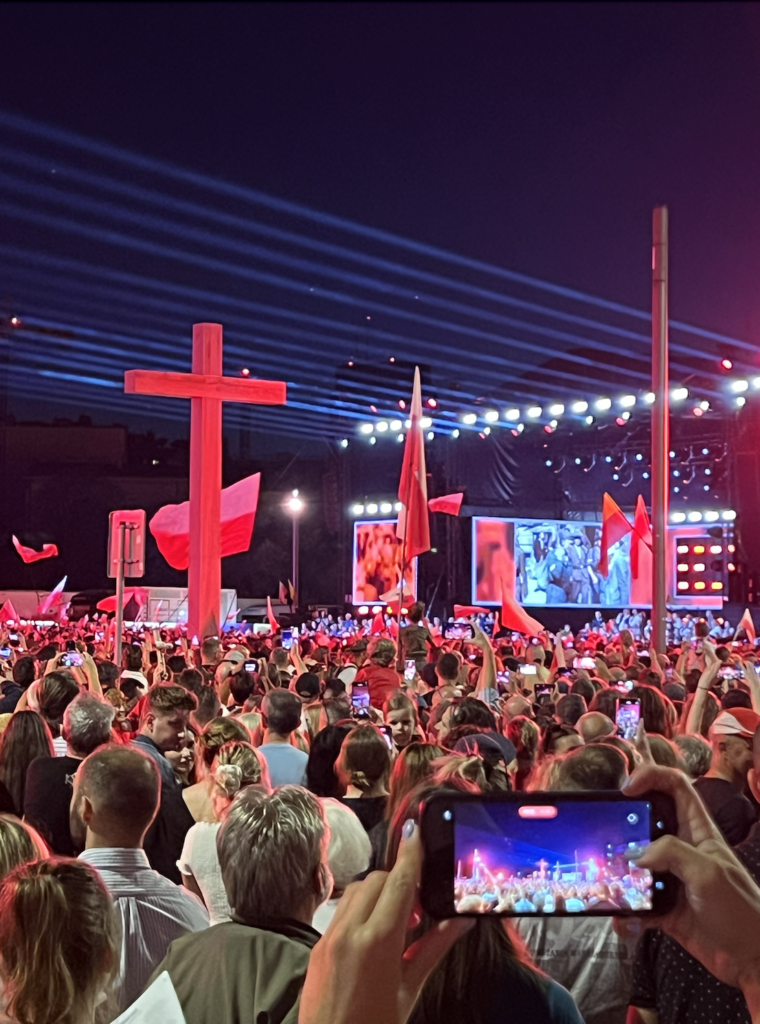
Already before 8.30 p.m., all those gathered took out the Songbooks printed and distributed by the Warsaw Uprising Museum. The repertoire was impressive, including : „Siekiera, motyka”, „Piosenka o mojej Warszawie”, „Marsz Mokotowa”, „Dziś idę walczyć – Mamo!”, „Hymn Szarych Szeregów”, „Hej chłopcy, bagnet na broń”, „Pałacyk Michla” or „Warszawskie dzieci”.
It the end, everyone proudly sang the National Anthem. Everyone stood at attention, cyclists dismounted from their vehicles and guests of the cafes neighbouring Piłsudski Square, often foreigners, stood up in awe to join the crowd of patriotic Poles.
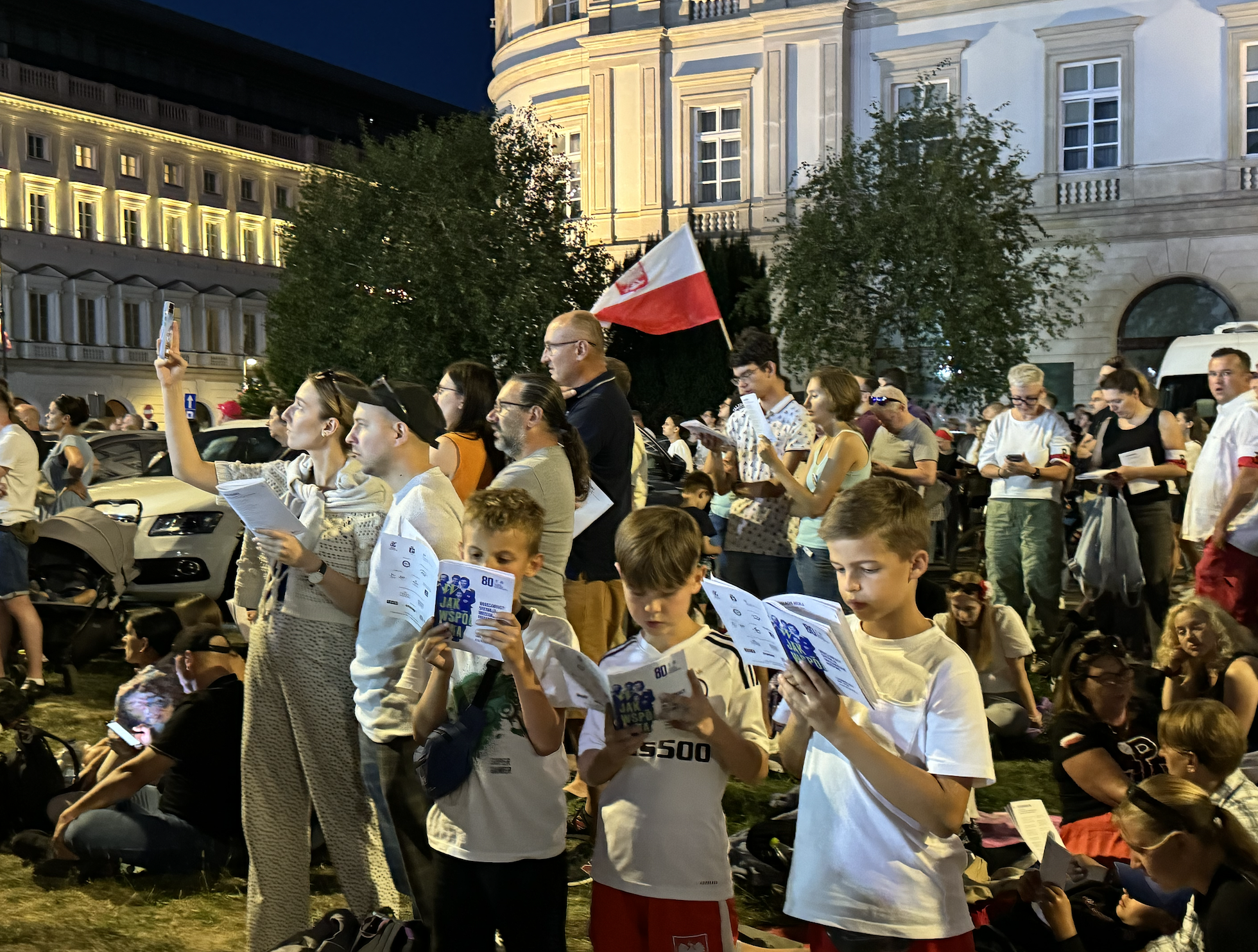
It is difficult to describe this day, as it is annually a combination of despair at the tragic fate of the Insurgents and, at the same time, emotion at their sacrifice and national pride coming from their heroism. We are now the last generation who can personally thank the Insurgents for their fight.
Glory to the Heroes and may the memory of them never be lost!
Author: Maria Byczynski
Photos: British Poles, Caroline Byczynski, Adam Tomaszewski



